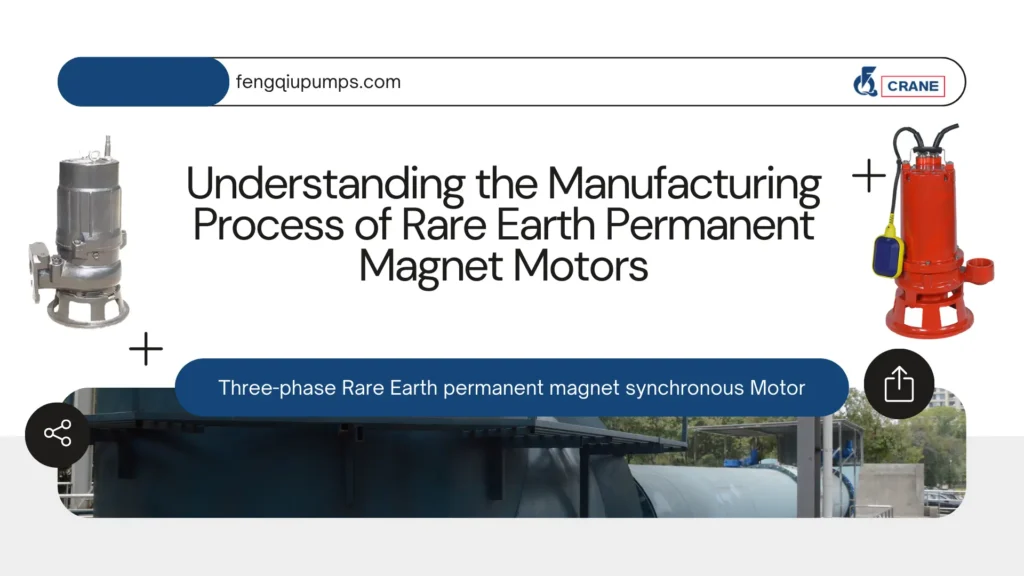Submersible pumps are quintessential in modern agriculture, built only for underwater operation to serve efficiently in relocating liquids from one place to another.
Unlike conventional pumps installed above the source of water, submersible pumps are submerged into the water, which categorizes them for a wide range of agricultural uses.
Because of their design, they are able to push water up to the surface instead of drawing it up, which can allow for increased efficiency and performance in a wide variety of farming scenarios.
In light of growing demands on more efficient water management, per climate change and ever-growing agricultural needs, understanding the importance and mechanics of submersible pumps becomes of growing importance to farmers and agricultural experts alike.
Learn More:
- Advantages of Using Submersible Pumps in Agriculture
- Types and Applications of Submersible Pumps in Agriculture
- Benefits of Submersible Pumps in Farming
Advantages of Using Submersible Pumps in Agriculture
Submersible pumps have a number of advantages, making them quite desirable for agricultural application due to the following:
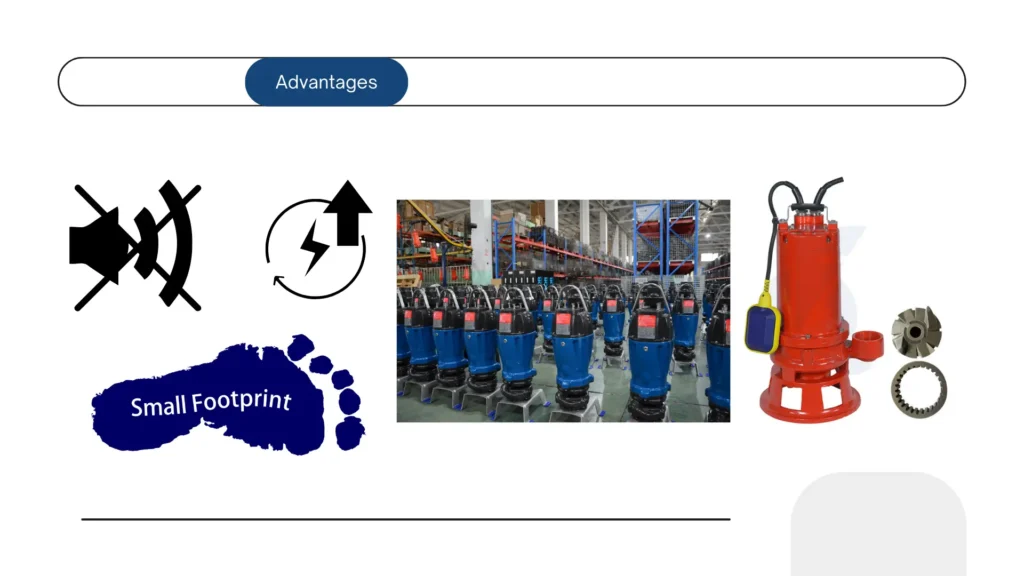
Space Efficiency
Submersible pumps are compact and designed to be installed right inside the source of water, such as wells or ponds.
The space-saving design of the pumps reduces aboveground infrastructure, thereby enabling farmers to make use of the land more productively for crops or livestock.
This provides the added advantage of not having heavy machinery above ground so that farmers can utilize the most available area, especially in smaller or more congested farming areas.
Minimum Noise Levels
Submersible pumps have indeed won a high degree of acclaim concerning their quiet manner of operation.
The submersible pumps, by virtue of being submerged in water, generate minimum noise compared to surface pumps.
This particular aspect is very helpful in animal husbandry and residential estates, where noise levels may be a serious cause of disturbance.
Lower noise levels simply mean a friendlier working environment for farmhands and less stress to the animals, hence serving to enhance farm management altogether.
Energy Efficiency
Submersible pumps are made in a way that they can operate while consuming minimal energy.
Due to the use of electric motors, which work effectively under water, large volumes of water can be transferred without any need for high usage of power.
This therefore translates to smaller utility bills, which becomes critical for farmers looking for ways to optimize operational costs.
Also, less energy consumption reduces the carbon footprint resulting from farming activities and hence is in line with sustainable development.
Multi-purpose Applications
Another great advantage of the submersible pump is its adaptability.
They can easily be set up for several different agricultural purposes: irrigation, drainage, and livestock water among them.
This in itself makes the workload of farmers easier since they can depend on one kind of pump for different purposes instead of having to manage many kinds of equipment or establish different systems.
Be it drawing from a well for irrigation purposes or removing water from a field because of flooding; this pump does it with efficiency.
Product Remmend:
Types of Submersible Pumps in Agriculture
A short description of the different types of submersible pumps will help farmers choose suitable pumps that would serve their needs accordingly:
Centrifugal Pumps
Mechanism of Action
Centrifugal pumps depend on a motor for the conversion of rotational energy into kinetic energy in the water.
The impeller initiates water through the inlet because of the rotation and discharges through the discharge pipe.
Continuous motion creates a vacuum that allows intake and delivery of the water.
High Flow Rates
Centrifugal pumps will be very effective in applications that require high flow rates, such as large-scale irrigation systems.
Many farmers have to transfer substantial volumes of water in the shortest time possible to ensure that their crops get enough water, especially at the peak growth phase.
Such pumps function well in such applications since they facilitate the timely distribution of water across extensive fields.
Operation Efficiency
The centrifugal pumps are designed for long-term use; they can run efficiently for long periods without wear and tear.
This dependability is crucial for the farmers who require a continuous water supply for their crops.
If well maintained, they can last for years and therefore be a good investment for the agricultural business.
Versatility
This pump is also extended beyond irrigation as it may be used for the draining of excess water in a field or water supply to livestock.
Their versatility is also a plus to farmers as one pump could mean less equipment and less cost to maintain different types of pumps.
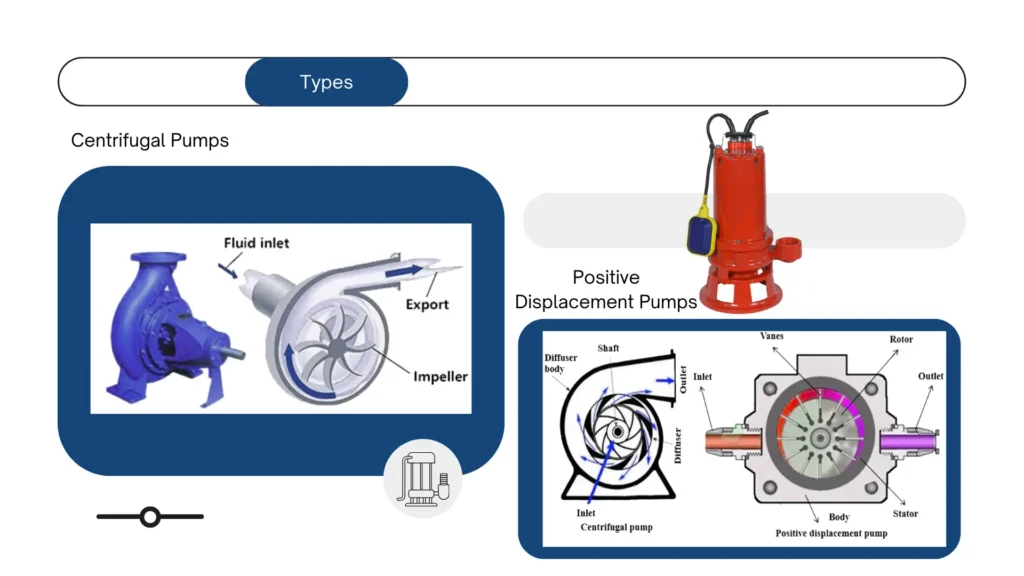
Positive Displacement Pumps
Positive displacement pumps have different applications and serve specific purposes in farming.
To further understand how they work and the advantages they bring, let’s look into:
Mechanism of Action
Unlike centrifugal pumps, positive displacement pumps will draw a given volume of liquid in a chamber and then force it into a discharge pipe.
Such an arrangement will ensure that at each cycle, a fixed amount of liquid is availed, hence these pumps are the best for places where the accuracy of flow rate is very critical.
Viscous Fluid Handling
These pumps come in especially handy in the case of thicker liquids, like fertilizers or nutrient solutions.
They will be able to run viscous fluids that may be poorly adapted to a centrifugal pump.
This capability is crucial in applications involving nutrient delivery systems, as it makes sure crops receive their feed without blockages or delays.
Accuracy and Control
Positive displacement pumps can give the ultimate in flow control accuracy for specialized irrigation applications.
With such pumps, farmers are able to tailor the output to specific needs their crops may have, thus assuring optimal levels of hydration and nutrient distribution.
Such precision helps with maximizing crop yields and enhancing overall farm productivity.
Durable and Reliable
Positive displacement pumps boast sturdy constructions and are hence mostly made from solid materials that are well-abrasive or corrosive-resistant.
Durable, this means farmers can bank on it for delicate applications without fears of constant breakdowns or repairs.
Applications of Submersible Pumps in Agriculture
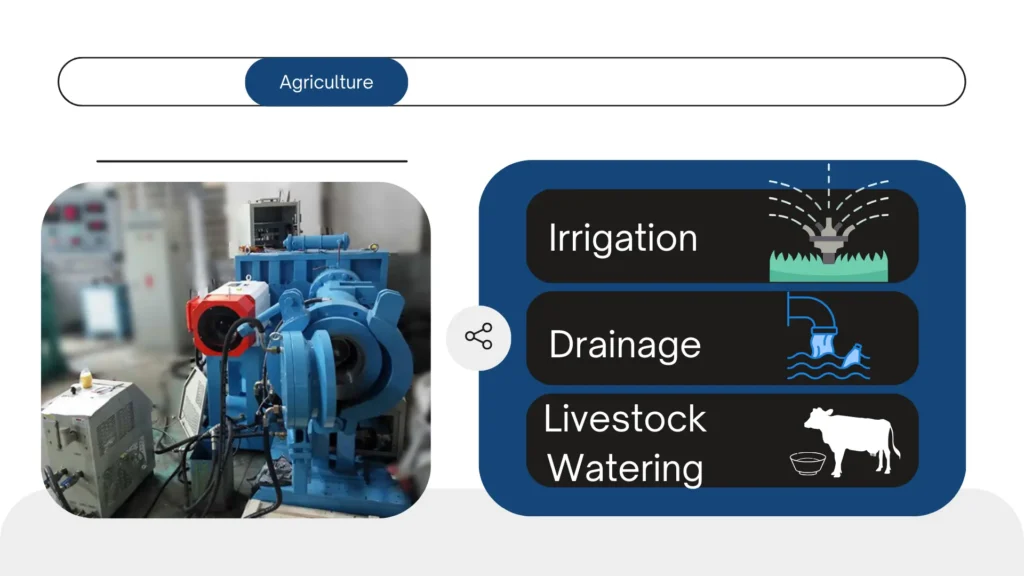
Irrigation
Submersible pumps are widely used to pump water directly from wells or rivers into the field.
The purpose of this is to have just about enough water throughout the growth cycle of crops.
By having this water conveyance at an optimum, the farmer can maintain consistent soil moisture in his fields for healthier and more productive plants.
Drainage
Because of this, these pumps are of utmost importance in areas that are flood or heavy rainfall prone.
Effective water drainage protects against waterlogging of crops, which is generally linked with root damage and low yield.
Quick pumping of water out safeguards the fields and ensures continuity in the most favorable conditions for crops.
Livestock Watering
Wherever a reliable supply of water is crucial for the health and productivity of the animal, submersible pumps can rise to that challenge by pumping fresh water into troughs or tanks, ensuring that your animals get enough water intake without having to resort to cumbersome piping systems.
These conveniences help in enhancing animal welfare and managing the farm more smoothly.
Benefits of Submersible Pumps in Farming
The use of submersible pumps within farming can be identified with a number of benefits, including:
Enhanced Water Distribution
The positives of this are that crops are healthier and yields better due to the reliable water delivery systems.
Farmers with submersible pumps can ensure their plants get exactly the right amount of water at consistent intervals, irrespective of the conditions in the air.
This reliability is taken as crucial when plants reach critical growth stages and even water stress might cause major yield losses.
Increased Yields
More effective irrigation access directly correlates to higher crop yield.
Through the submersible pumps, farmers are able to regulate a fine watering schedule, ensuring crops have just enough water.
This means more and better harvests, allowing a farmer to reach the maximum output and profit from farming.
Operating Costs Are Lower
Energy efficiency and reduced maintenance signify lesser overall operational costs for submersible pumps.
In this regard, farmers can utilize scarce resources more effectively, minimize energy consumption, and reduce the frequency of repairs, hence increasing financial sustainability.
This cost-effectiveness is very crucial in today’s competitive agricultural market.
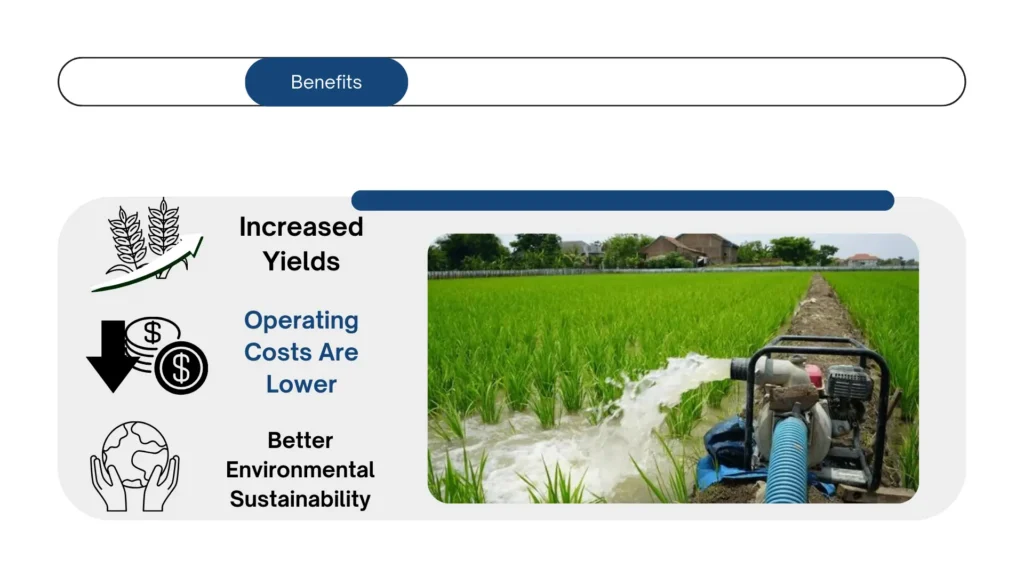
Better Environmental Sustainability
Water conservation and reduced energy consumption make submersible pumps more ecologically viable.
Because water is used more efficiently, this resource can be conserved by the farmer.
In addition, there is a lower carbon footprint with more energy-efficient pumps that will certainly be in accord with international sustainability initiatives on being more appealing to the eco-sensitive farmer.
How to Optimize Performance of Submersible Pumps
Following are some good practices to ensure submersible pumps work at maximum efficiency:
Regular Maintenance Practices
Preventive maintenance such as routine checks can help in averting such breakdowns, hence giving the pump a longer life.
Such maintenance practices involve cleaning of filters, electrical component checks, and general wear and tear inspections.
Proactive farmers will save resources from expensive repairs and continue operating throughout the growing seasons.
Choosing the Right Size and Type of Pump
It is very important to select the correct pump for any particular farm depending on the water requirement and prevailing conditions.
A small pump will not be able to cope with the supply of adequate water, whereas a very big one will result in inefficiencies and heighten the cost of operation.
Farmers are able to make better choices by assessing the water requirement and seeking expert advice.
Monitoring Pump Performance Indicators
Performance indicators are flow rate, pressure, and energy consumption.
Farmers can get an indication of looming problems from these indicators if they are monitored with some frequency, thus enabling them to intervene in time and ensure that the pump operates under optimal conditions.
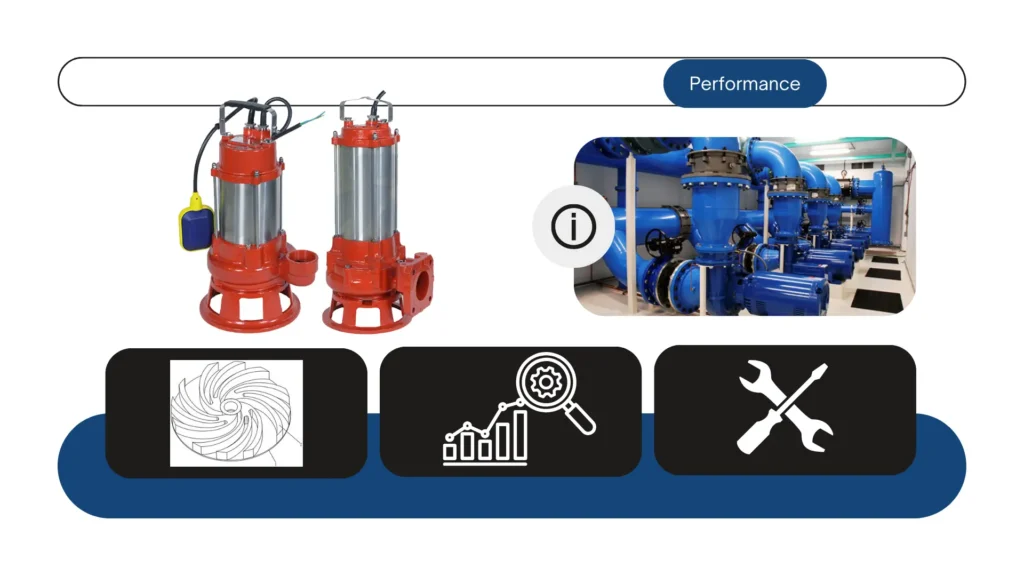
And More:
7 Benefits of High-Efficiency Submersible Pumps
There are several long-term advantages of investing in high-efficiency submersible pumps:
Energy Savings
High-efficiency pumps have lower energy consumption; savings accrued over time will mean large sums of money.
Savings made from energy bills will give farmers the resources to invest in other important sectors of their enterprise, such as purchasing seeds, fertilizers, and renovating equipment.
Improved Longevity
High-efficiency models indeed often come made from better materials and with advanced technologies, which enable them to put up with the most unfavorable conditions and serve longer.
This, in turn, reduces the frequency of unit replacements-which itself is a great gain both financially and for the sake of convenience.
Lower Carbon Footprint
Lower energy consumption translates into lower greenhouse gas emissions and is friendlier to the environment.
By operating high-efficiency pumps, farmers will help make a sustainable lifestyle more possible and be able to cater to the growing environmentally conscious consumer base.
Improved Reliability
Advanced technologies in high-efficiency pumps often lead to fewer breakdowns, and that ensures consistency in operation.
Certainly, this is an important factor during peak agricultural seasons when crops require a constant water supply for their health.
Less Downtime
Reliable pumps mean fewer disruptions in the water supply, something that is quite critical during the critical stages of crop growth.
This minimum level of farm downtime will help with maintaining the best crop environment that will support higher general productivity.
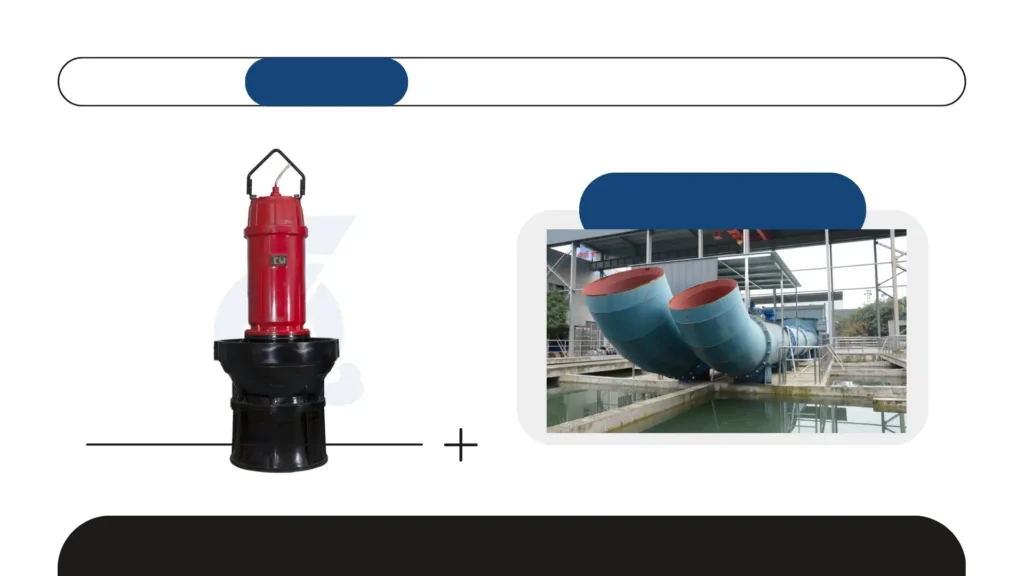
Long-Term Cost-Effectiveness
Though high-efficiency pumps require a higher initial capital investment, the savings from reduced energy costs and maintenance make the pumps a smart financial choice.
The payback in investment gradually emerges when farmers are faced eventually with less operational cost and improved productivity.
Improved Water Quality
Efficient pumps mean better water supplies that can remain cleaner; this is very important for both crops and livestock.
For healthy plant growth and high-quality animal welfare, good water quality is an issue of the highest importance to farmers concerned about following sustainable methods in agriculture.
Conclusion
In other words, submersible pumps play an important role in agricultural use through the advantages given to them in terms of huge volumes of water delivery, crop yield, and high reduction of operations costs.
The ability to understand the various types of pumps and their applications, together with best practices for maintaining and optimizing these pumps, equips farmers with the right information to make informed choices that help optimize their endeavors.
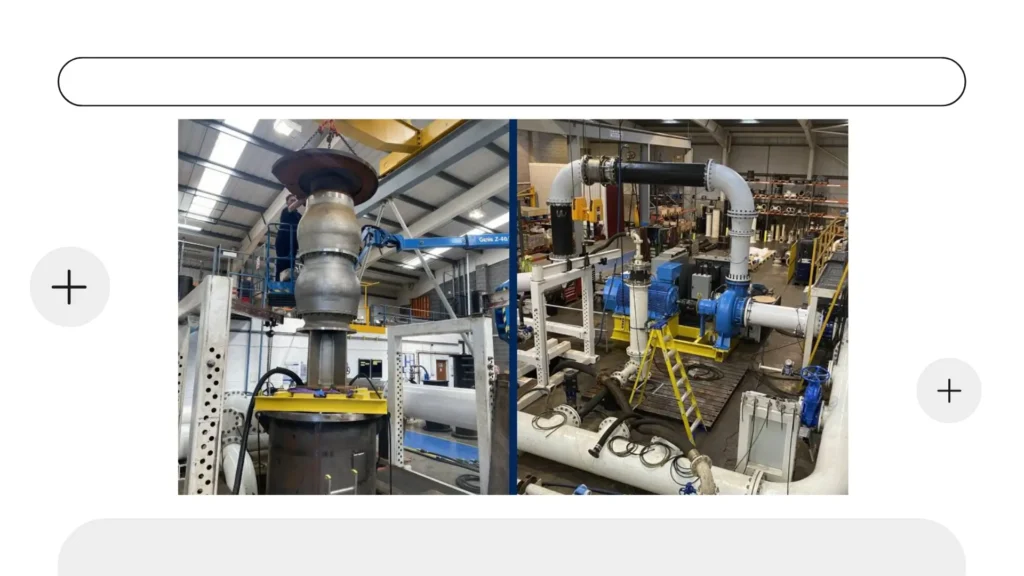
Investing in top-of-the-line submersible pumps today paves the way for a very sustainable and productive future in farming.
With increased innovation in technological fields, more ideas will come up concerning the design of submersible pumps and, therefore, even more efficient solutions concerning agricultural technology.
Farmers, on their part, are supposed to be familiar with these tendencies so that they would be at the forefront of agricultural technology, making their work competitive and sustainable for many years.

